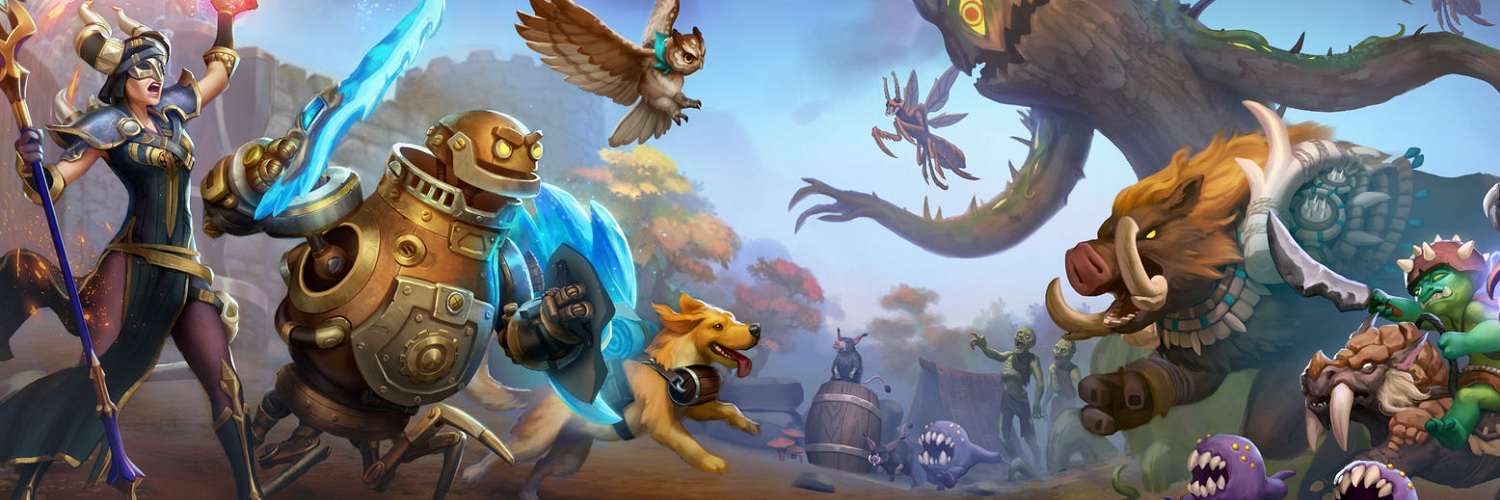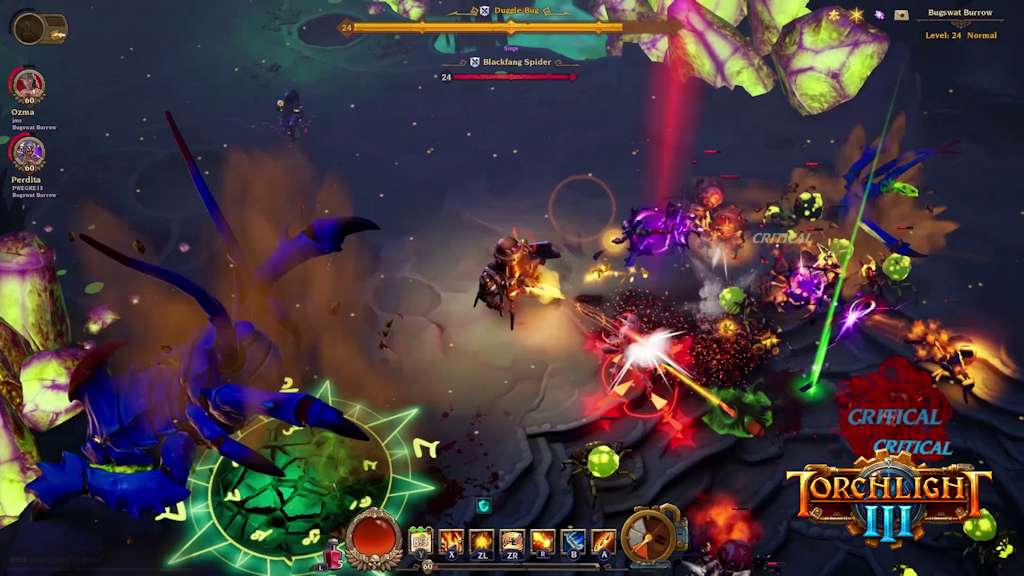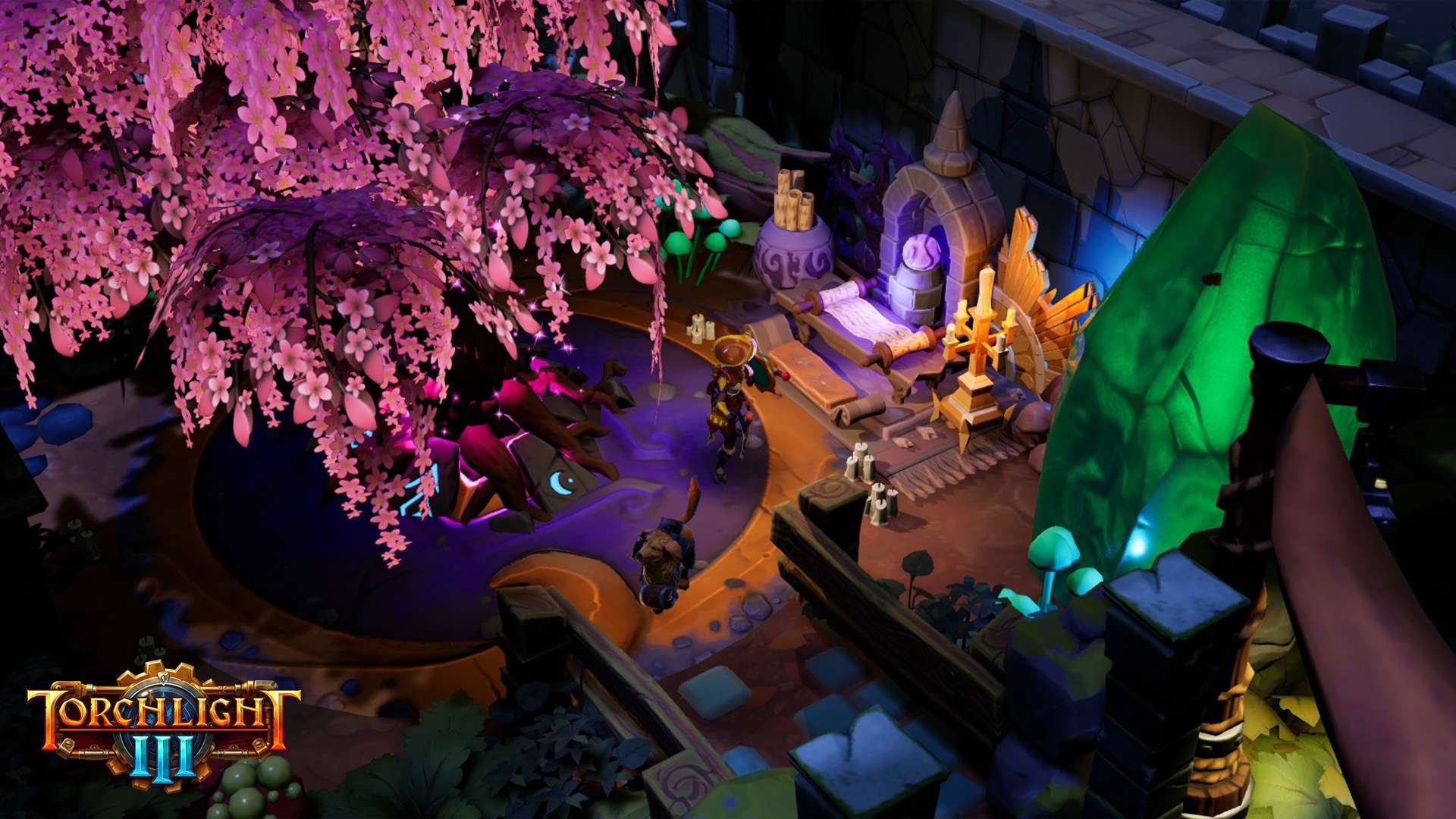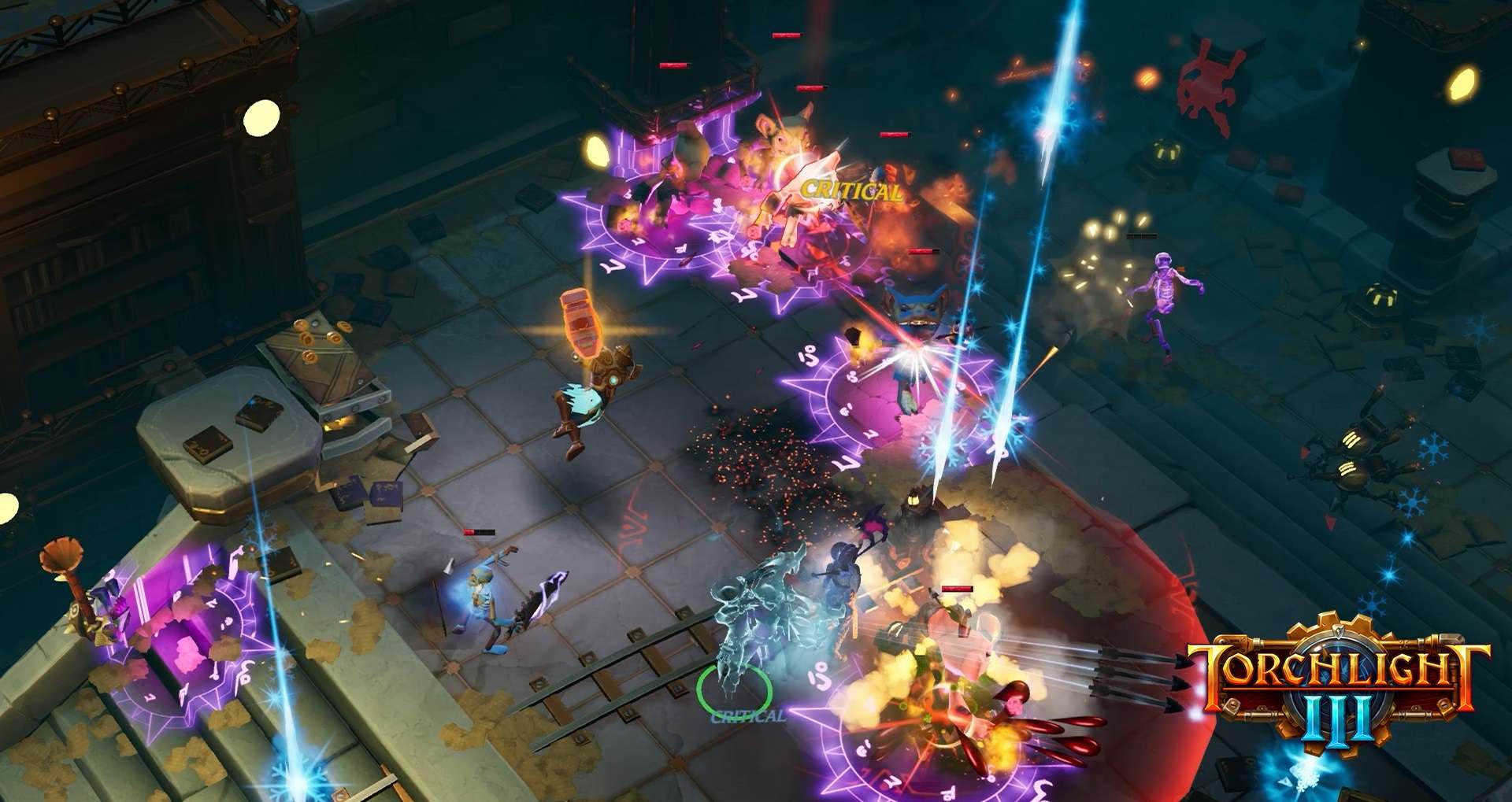
Torchlight III Switch Review
Torchlight III had a design dilemma through its development cycle. Formerly pitched as Torchlight Frontiers, the game was continuing the action RPG series with one of the original founders of Runic Games (developers of Torchlight and Torchlight II), Max Schaefer. After forming a new team with ex-staff who had previous experience in the genre, named Echtra Games, the studio went ahead to create a new Torchlight, but was going for a massively multiplayer online shared gaming world that would be free-to-play and offer games as a service and micro-transactions support to keep it flowing with new content. I think it was fair to say fans did not like this new direction for the series, so the feedback was received and the developers renamed the game to Torchlight III and dropped the free-to-play direction and went for the traditional paid release that people enjoyed with the previous two entries.
Continuing from the events of Torchlight II, this sequel takes place 100 years later where Novastraia is in danger from the Netherim, demonic creatures that invade dimensions to destroy any opposition that want to stop them. What this means is the player is tasked to protect the world once again. As for the story, it is told through short cutscenes and discoverable audio logs. Will you care for the game’s story? Probably not, it is quite throwaway, with a few key character friendlies that delivery quests or enemies that will be forgotten as soon as you give them a beat down. Action RPGs do not live or die by their story, but it is always nice to get invested in their story, world or lore. In Torchlight III, I do not think people will be bothered and instead will focus on just playing the game for action.

Torchlight III splits its single and multiplayer across two saves, so be careful when going about what you want to do in the game, as once a character is created they are stuck on that playing option. The differences between them is that multiplayer means people can play with you and the character is checked for cheating on the servers, while single player is for staying offline and playing on your own. Playing with friends is always nice, but with no local offline play on the same device this upsets the Switch’s brilliance of couch play action, which is now only achieved if everyone has a switch, the game and a internet connection.
Classes in Torchlight III are quite fascinating. The game offers a couple of classes that are something a little different. There are four classes to pick from when creating a character – Railmaster, Forge, Dusk Mage and Sharpshooter. Railmaster is what I spent most time with in the game. This is a melee focused class that can summon a battle train that follows where ever the character goes. The train is made up of three sections, with each one able to host a weapon ranging from machine gun, shotgun, mortar and a great AOE flamethrower. Forge is a robot that is based on controlling heat usage, as each skill used builds up heat and overheating will lock these skills until the heat returns to normal. Dust Mage is the mage class that combines both light and dark spells for destructive power. The last class, Sharpshooter, is the range class, with skills, summons and weapons dedicated for distance attack.

Along with class selection is the addition of picking a relic class that gives the character more abilities to unlock during the game. Relics come in five variations covering key elements in the game, Bane (poison), Coldheart (ice), Flaming Destroyer (fire), Electrode (electricity) and Blood Drinker (bleed). Relics are a neat way to add extra customisation to a class, since classes do not have many skills to unlock, with the last one in both the relic and class skill set unlocking at level 20. The idea is to pump the skill points unlocked at levelling up into the two skill trees that come with the class along with the skill tree with the relic. Skills can be levelled up 10 times, with each level buffing the skill, and hitting a specific tier in the skill unlocks a bonus feature for it. Some relics synergies better with certain classes, so for the hardcore action RPG fans a guide is probably helpful to find out what works best, but for me I just went with the one that seemed cool, no pun intended with that comment. The last thing to pick is a pet, something the Torchlight series has been known from since the beginning – pets fight with the player, but can also store items and be sent back to the town to sell them. Once an animal is picked, it is time for adventuring.
Things are all so familiar when playing Torchlight III that anyone who has experienced an action RPG will be well at home playing. It has the isometric view, control sticks to move, buttons to attack, with skill shortcuts on different buttons to cast them, and plenty of enemies to scrap with. One thing that I did feel that was one of the game’s weaker points is actually the progression of the story across the three acts. The quest system is extremely linear that it essentially boils down to pick a quest, progress to the next area, complete quest by finding items or killing a boss, go back to base, get new quest, go to next area and complete quest. Sure, you could say all action RPGs are like this, but if you look at some classics over the years, Titan Quest, Diablo III, Path of Exile, they all feature acts, hub towns, location themes, but they offer a multitude of quests in those areas to get you to explore. Torchlight III has no openness to its quest design, and the lack of side quests hurts this – there is really no point in exploring unless you want more chance to gain loot from chests, so the adventure becomes a single focused plod to the end of the campaign.

This spreads into the locations in the game’s three acts as well. The first two acts are a little too similar in theme. There are forests and plains, but while the first act’s forest is all beautiful and fresh, with skeletons rising from the ground and goblins wanting to chop heads, moving into the second act, again a name with a forest title, gives this forest a darker tone with more underground traversal as the enemies change to zombies, spiders and other insects. It is only the last act where the the enemies and environment theme becomes more interesting. Long gone are all these forest variations and instead we get to travel up the mountains in a production base and enemies that swoop down from the sky.
Elements of its free-to-play history do remain part of Torchlight III to add extra to the game, but none of them are great. Sure, keeping them in does no harm, but it shows the rush to quickly turn the game around from free-to-play to full retail without fleshing out the ideas that were included before the transition. There is a contract that builds up from fame that unlocks goodies at each tier unlocked, similar to a battle pass in free-to-play games. These could be items, consumables or decorations for the your fort, which is a feature of the game that feels soulless.

The Fort is your character’s base, which when playing online can be on display for your cooperative friends to see. The issue with it is that it seems superfluous, as all it does is enable the player to use resources – trees, ore, rocks – found in the levels to create buildings, decorations and some occasional useful items that can improve fire resistance or gear luck drop rate, but for most of it, it is only here to build a pretty place with no real meaning to the game. The Fort feels like a left over feature from its initial free-to-play design days, probably used with micro-transactions to buy unique decorations. If this was the case, Torchlight III would have not gone very far, as if this is how mechanically it was implemented then there really is no reason to invest in decorating a fort apart from a few of the critical designs that change character stats.
Getting through the campaign will take around 15 or so hours, which is around the short to normal length of an isometric dungeon crawler campaign. This leaves the post story/end game content for a reason to keep playing the same character and max their level to 60, which for the genre is often seen as one of the key aspects to keep players around. For this, Torchlight III includes a challenge mode with Fazeer’s Dun’djinn, a random dungeon that can be modified by picking a card with a positive and negative modification, such as +50% gear luck and 30% chance monsters will explode on death. It is a bit like the rift feature in Diablo 3. When starting, there are challenge rules grouped together (these also have a modification for the whole set), starting with 1-3, and once all are beat, the next tier unlocks with more new challenges (4-7). Each card is a dungeon that needs to be beat without dying. If you do manage to succumb to death, you will be reset to the beginning of that challenge tier, so if a person were on challenge 6 in the 4-7 set, then that person is reset back to 4 and must do the challenges again to progress upwards. There seems to be plenty of these random dungeon challenges, so that is a neat extra to try beat them all (if that is possible).

Fazeer’s Dun’djinn does feel similar to the mapworks in Torchlight II and not as good as some end game content done in other titles, such as Adventure mode and all its extras in Diablo III. Without extra high tier sets (basically gear is limited to 60, so runs in this post game stuff is down to trying to find the gear that best fits with the class build), there is no incentive to keep playing once 60 is hit unless you have a urge to beat these challenge dungeons and get on top of the leaderboard for it. Fazeer’s Dun’djinn adds some staying power, but not enough for a long time investment into Torchlight III. The contracts do come in seasonal variety, such as the upcoming winter theme with new pets, fort decorations and cosmetics, but if that does not interest you, expect your time with Torchlight III to be a short one.
Similar to getting Torchlight II on the Switch, the third instalment has had to give up some visual fidelity to keep it running acceptable on the hybrid device. Image quality takes it a hit, so expect to see aliasing, blurry textures, less detailed shadows, but the art style still remains nice, with its cartoony aesthetics continuing on with the series’ tradition. Frame rate is unstable at times, mainly when lots of effects are happening on screen, such as the explosion from levelling up when enemies are around you. It can really start to chug later in the game where mobs are in waves, bringing in stutter that spoils the presentation of the game. It’s not as smooth as Torchlight II, but I suppose the gap in years between those two games, one might expect a newer game to struggle. One other thing to note is that playing with a controller feels great – it doe not feel like a handicap over a mouse and keyboard.

Torchlight III is a strange one – it comes with some good ideas but falters in others. The new classes are original for the series and seeing what skills unlock in both their skill set and the relics is a nice discovery. Problem is that the enemy and environment variety, along with the streamlined single focused quest line, makes this a inferior game, and also a worse performing one compared to Torchlight II, which is also on the Switch and worth picking up over this sequel. Torchlight III is not a bad game, it’s just a filler, a quick fast food lunch for action RPG fans, one to play once the better games in the genre have been beaten. I feel this game is not one for replayability – once the story is done and the end game content becomes monotonous it is time to move on to something else. This might suit people who do not want to be invested in grinding for hours upon end and simply want to slaughter plenty of familiar enemies for a few hours, but for the hardcore, this will be a disappointment.
